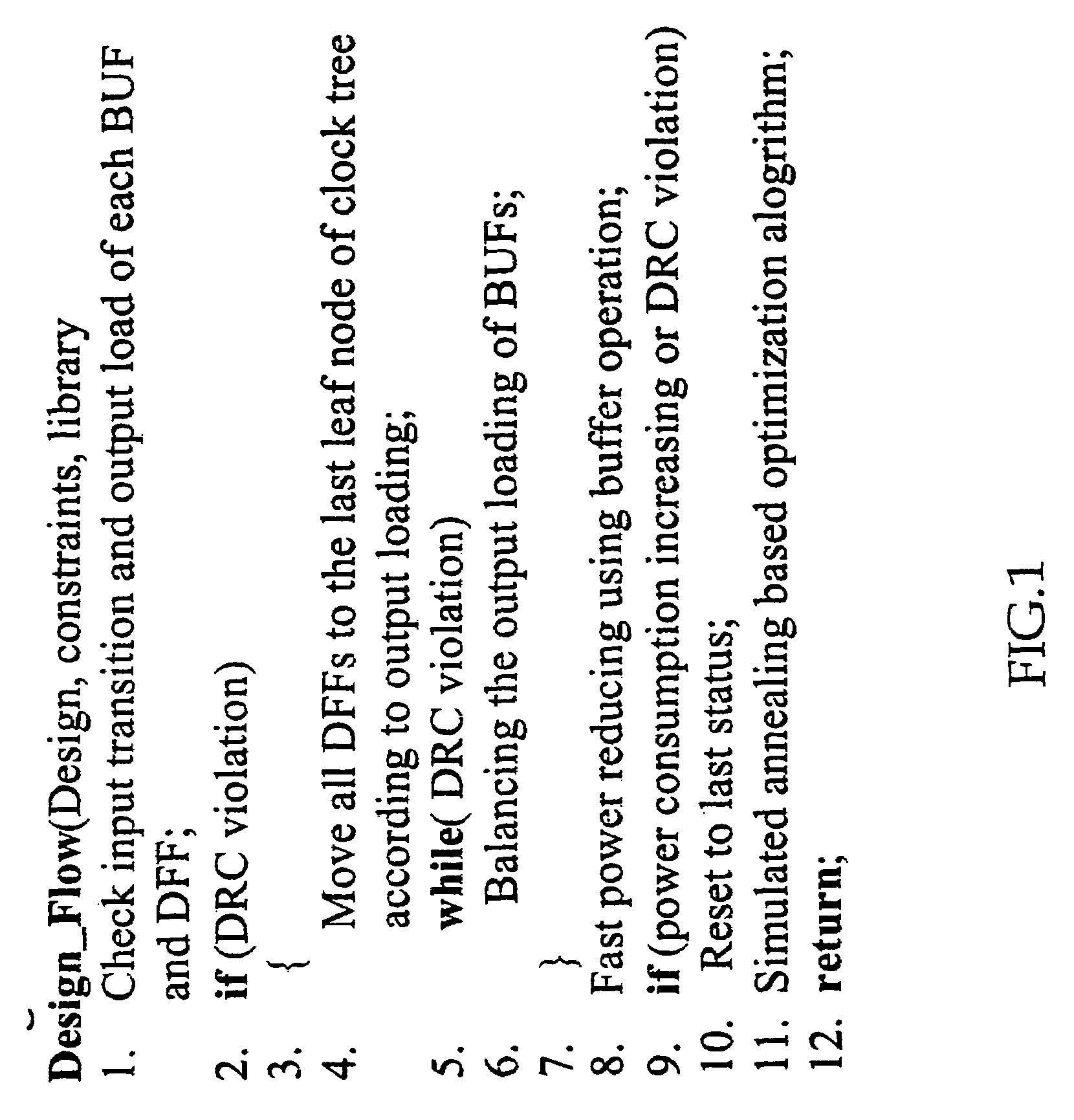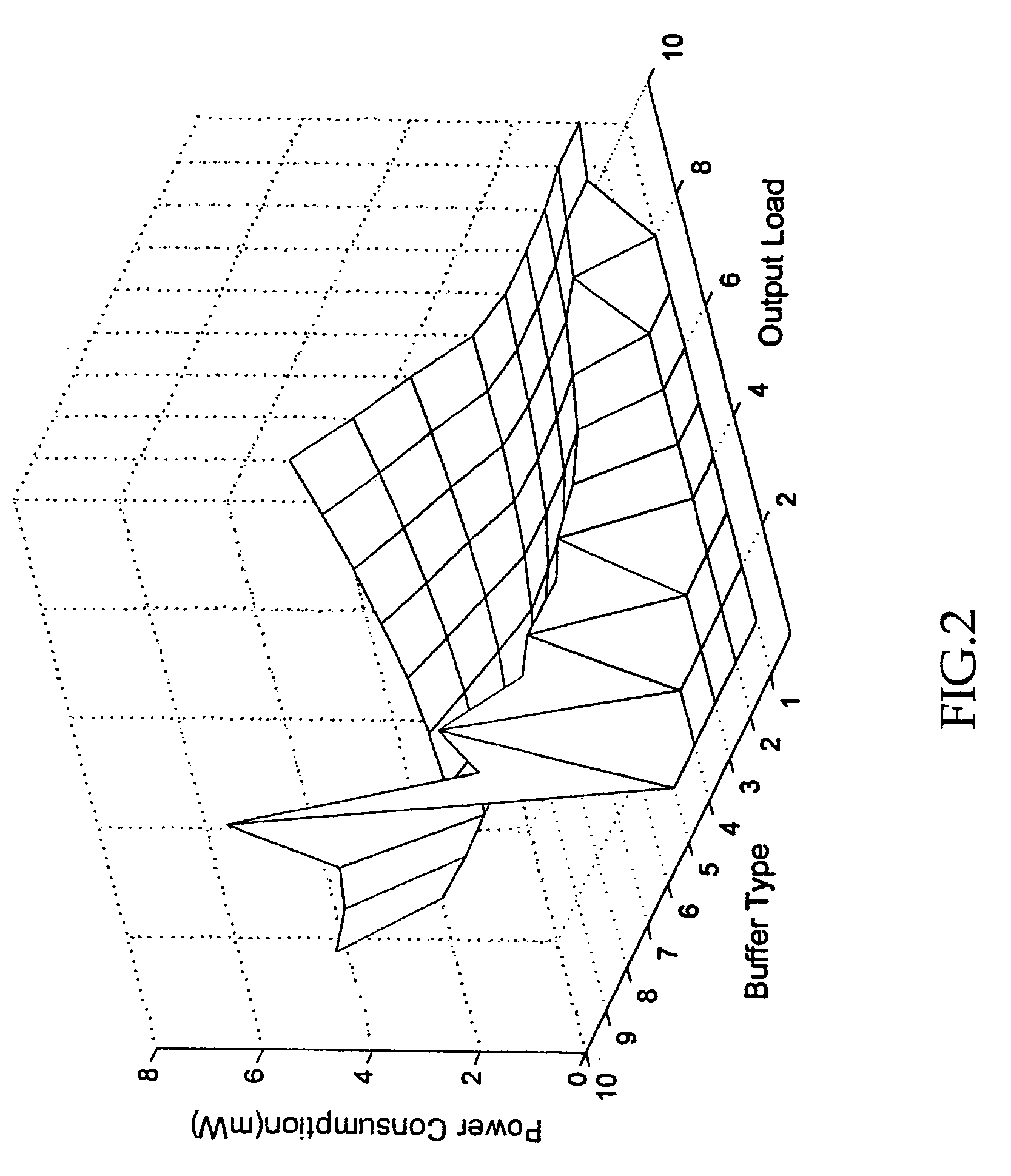Clock tree synthesis for low power consumption and low clock skew
a clock tree and power consumption technology, applied in the field of clock tree synthesis, can solve the problems of clock skew directly affecting chip performance, clock delay and critical problem minimization, and achieve the effect of reducing power consumption and clock skew
- Summary
- Abstract
- Description
- Claims
- Application Information
AI Technical Summary
Benefits of technology
Problems solved by technology
Method used
Image
Examples
Embodiment Construction
[0017]A clock distribution network that has been implemented with a cell placement and an initial clock tree is given. A specified liberty library that includes clock buffers and D-flip-flops (DFF) is also given. A clock network to dissipate minimal power and satisfy clock skew constraint at all receivers (DFFs) is also given. The clock skew should be small, even under process variations. A developed software has to apply allowable techniques, such as buffer insertion, buffer resizing, and buffer removal to reduce the dynamic power under the constraint of the maximum clock skew. It is allowed to resynthesize a better clock tree, except that a root (i.e. a clock input pad) of the clock tree should be the same as a root of the initial clock tree.
[0018]The power dissipated by the clock distribution network can be attributed to charging and discharging of wiring and load capacitances through interconnect resistance and driver resistance and to the static power dissipated, if any, by the...
PUM
 Login to View More
Login to View More Abstract
Description
Claims
Application Information
 Login to View More
Login to View More - R&D
- Intellectual Property
- Life Sciences
- Materials
- Tech Scout
- Unparalleled Data Quality
- Higher Quality Content
- 60% Fewer Hallucinations
Browse by: Latest US Patents, China's latest patents, Technical Efficacy Thesaurus, Application Domain, Technology Topic, Popular Technical Reports.
© 2025 PatSnap. All rights reserved.Legal|Privacy policy|Modern Slavery Act Transparency Statement|Sitemap|About US| Contact US: help@patsnap.com



